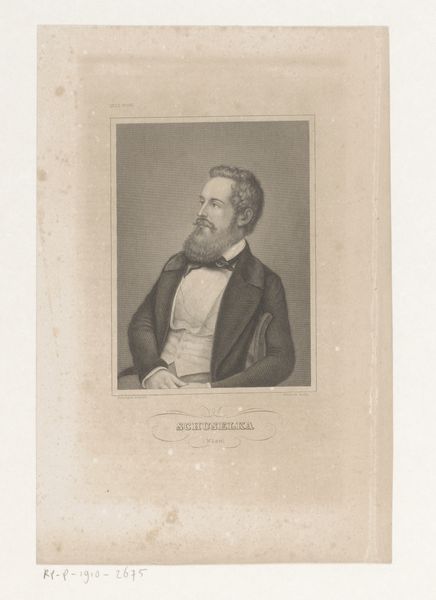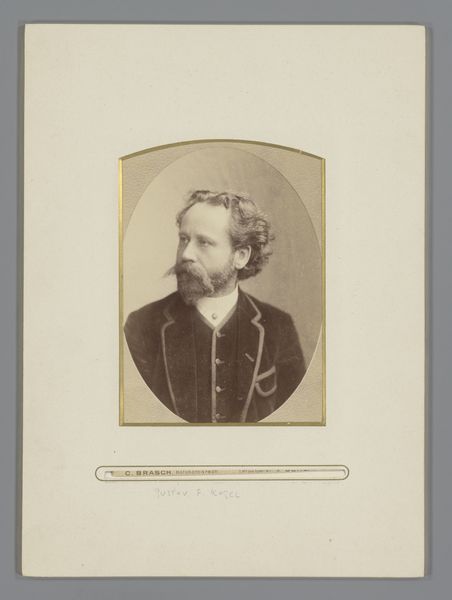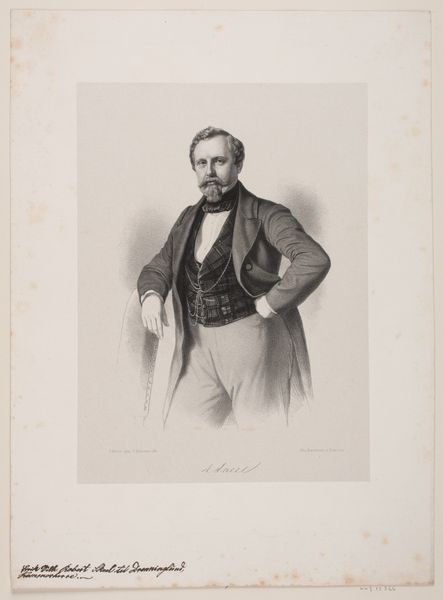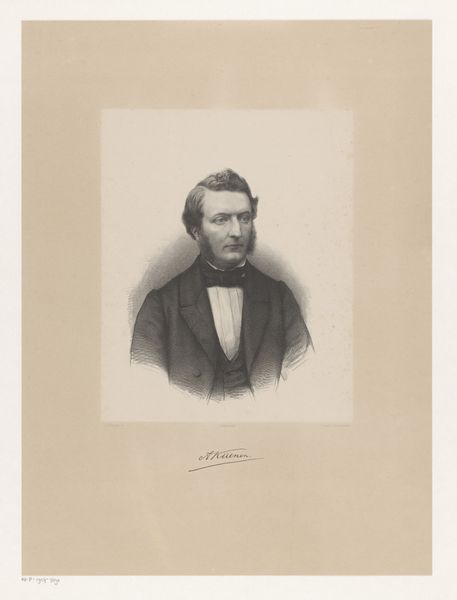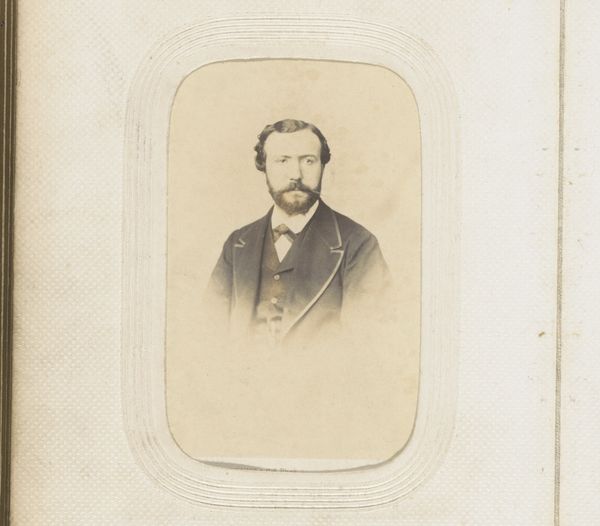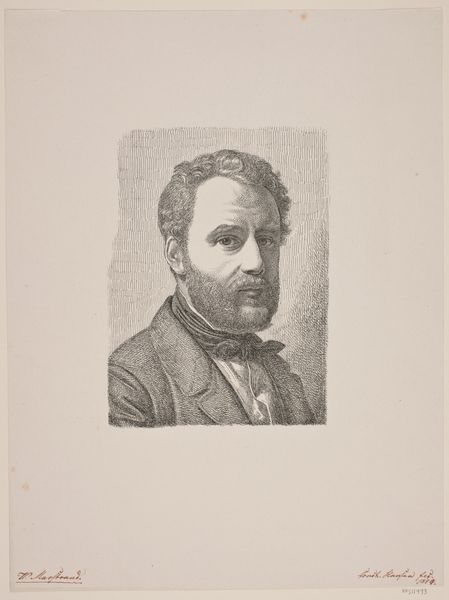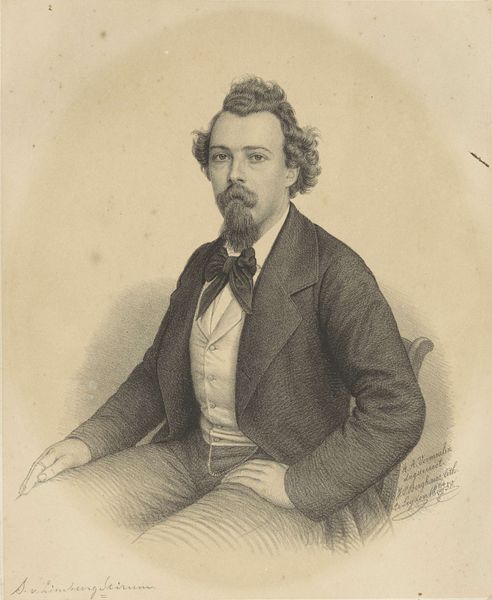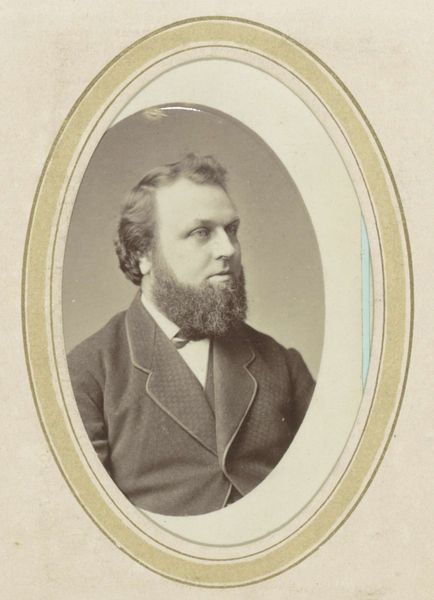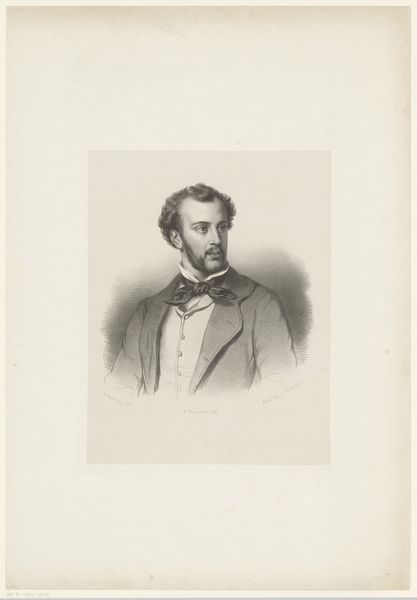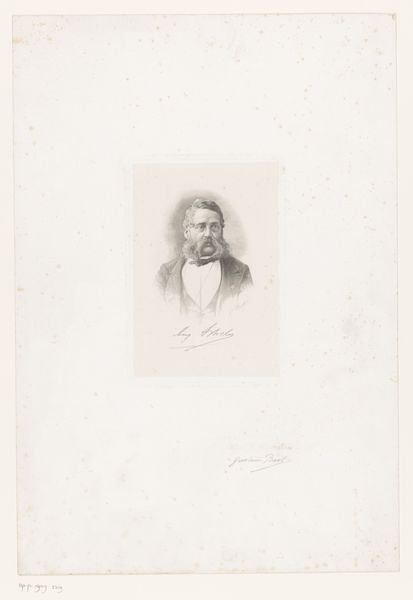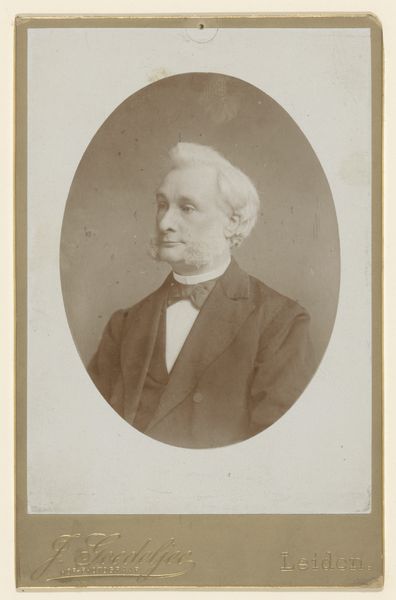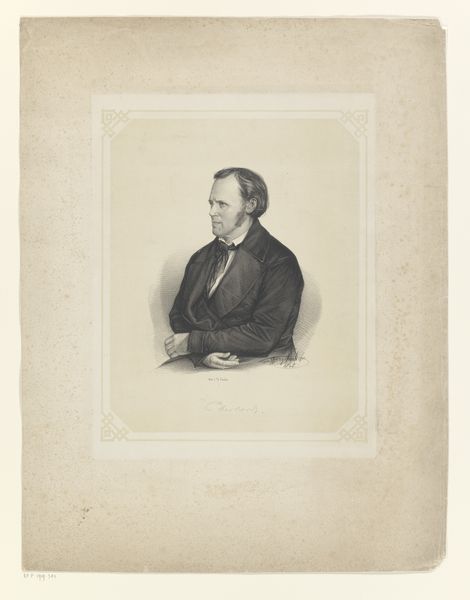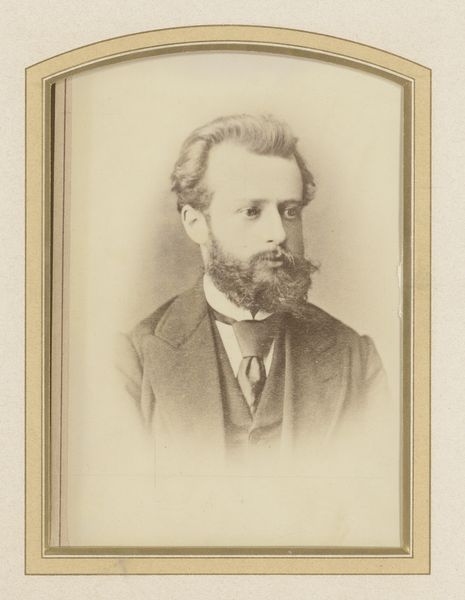
photography, gelatin-silver-print
#
portrait
#
photography
#
gelatin-silver-print
Dimensions: height 105 mm, width 64 mm
Copyright: Rijks Museum: Open Domain
Editor: Here we have Maurits Verveer’s photograph, "Portret van Johannes Stroebel," likely from 1872, created using a gelatin-silver print. It's a striking image; I'm curious about the conventions of portraiture at this time, since the sitter looks directly out at the viewer with this very formal wear, but the photographic technology is relatively new. What can you tell me about this work in relation to portraiture in Dutch culture? Curator: It's fascinating to consider this in relation to the broader context of photography's rise. Photography in the 19th century democratized portraiture. For centuries, painted portraits were a status symbol of the elite. Photography suddenly made it possible for the middle class, and even working class, to acquire lasting likenesses of themselves and their loved ones. In this sense, Verveer’s photograph contributed to shifting social dynamics. The Rijksmuseum holds countless photographic portraits that reflect new class and social dynamics. Do you think the formal dress contradicts this democratizing trend or complements it? Editor: I see what you mean. Perhaps it reflects a desire to emulate the upper classes, even if portraiture itself was now more accessible? Did photography, at the time, also influence how painters made portraits, or were these two worlds separate? Curator: Absolutely. Early photography undeniably impacted painting, pushing artists towards explorations of abstraction and subjective interpretations of reality. It challenged traditional representational roles, fostering artistic innovation and a re-evaluation of art’s social function, including questions of authenticity. This one has so much going on historically. Editor: It's definitely changed how I look at photographic portraits. The democratization of imagery alongside the continued signalling of status – it’s quite complex. Thank you! Curator: A pleasure, this opens up great opportunity to learn about social and class distinctions and how art helped cement such delineations.
Comments
No comments
Be the first to comment and join the conversation on the ultimate creative platform.
